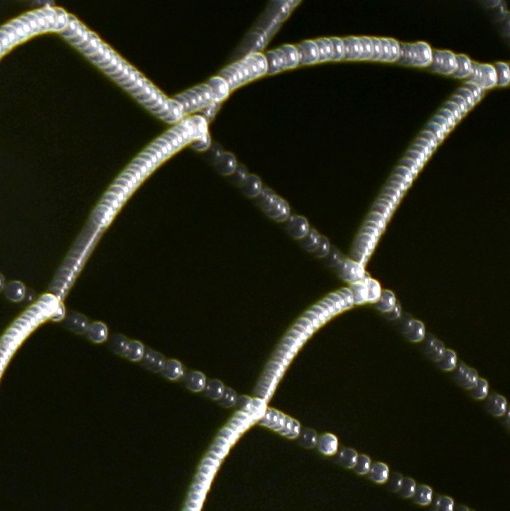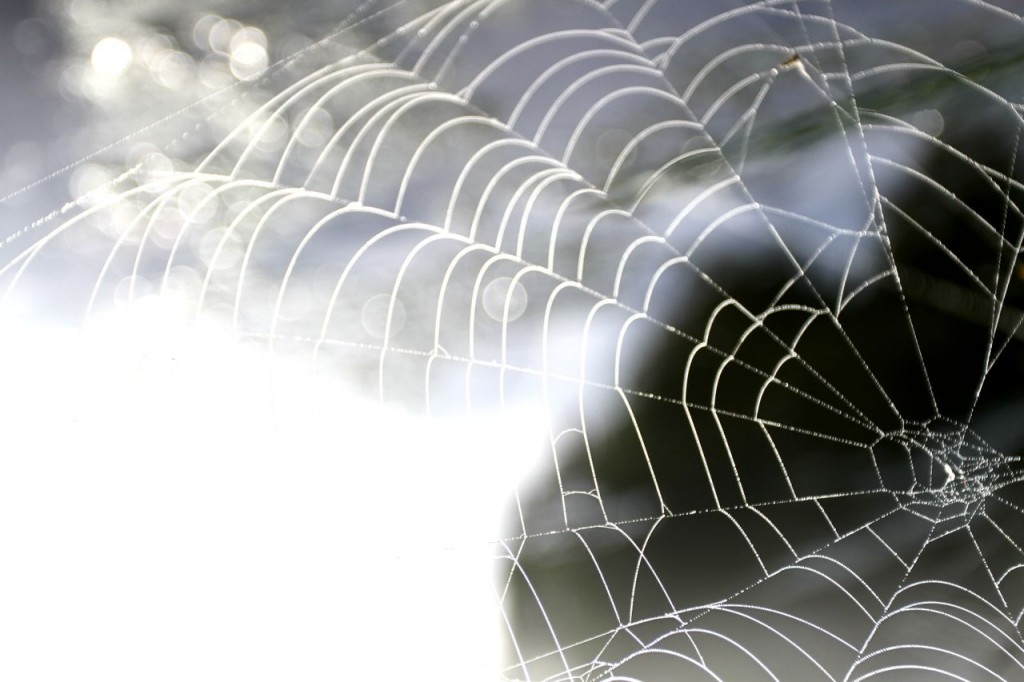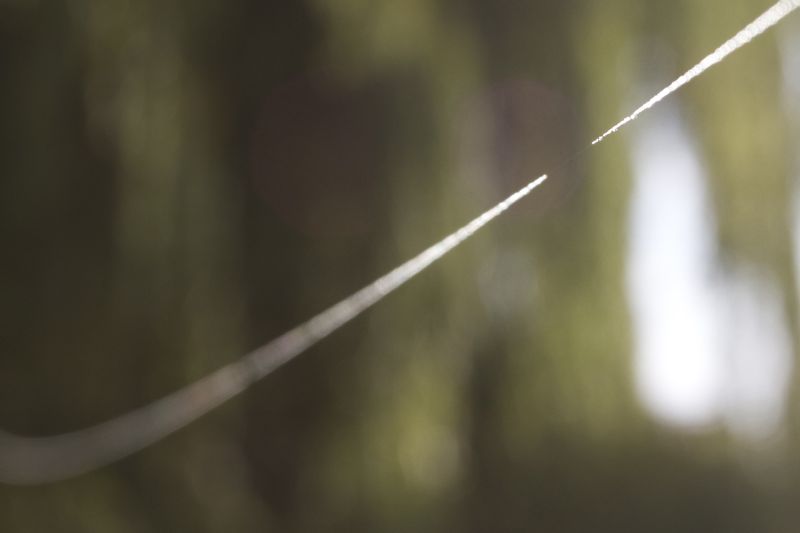I got up yesterday morning at what for me is quite an early hour – 6.30ish. So with no CSI on the box at that time, I chose the healthy option and went for a walk in the park. Where I took this picture:

That’s only kind of true. What I actually took was this picture:

and only later discovered the fine structure of water droplets clinging to the spider’s thread when I got home and fired up the computer.
A beautiful and fascinating sight. But, as per usual, the deeper beauty is in the science behind WHY droplets deposit in such regular patterns.
One Google later, I’d found this relevant study described in a Nature News piece (full research paper doi:10.1038/nature08729 behind pay-wall; also as per usual…).
The News piece describes work by Lei Jiang from the Beijing National Laboratory for Molecular Sciences on the hackled orbweaver spider Uloborus walckenaerius. The authors found that if you get in close enough, spiders’ silk appears not as a simple thread but is covered in puffs of minute nanoscale fibres. When the puffs get wet they contract into tight beads or knots connected by thinner pieces of silk, necklace fashion. Additional water migrates and accumulates on the rough surface of the knots in preference to the smoother connecting silk, forming the uniform droplets we see. The research also inspired thoughts around practical offshoots, like the possibility of a man-made equivalent for the manufacture of highly water absorbent materials.
I didn’t see any ‘puffs’, but I’m pretty pleased with the resolution I achieved with a good but relatively straightforward camera. That said, I’m feeling the need to get some of that spider silk under the microscope.
Here’s one more picture taken on the same day, of a single strand of web stretching between two trees; would you believe a distance of over 20ft?


The water is clearing from one portion, and the dry filament is just visible in the close-up view. In the technical jargon, we can say the ratio of droplet size to silk diameter is ‘amazing’.
And if you’re wondering where the spider/s were all this time? Me too. For the arachnophiles, here’s one I took earlier.
